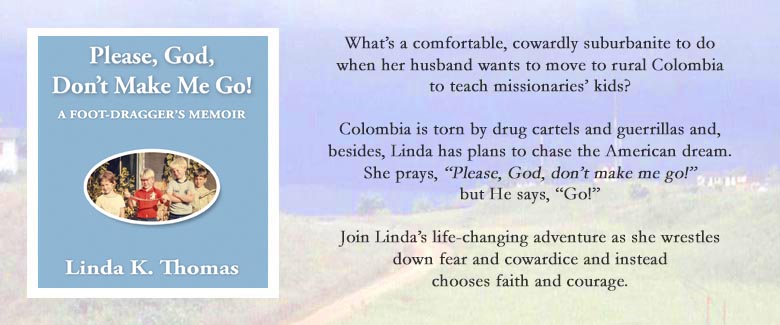In
a quiet jungle valley in Lomalinda, our friend Mardty raised chickens in a
little red barn, but she was troubled—she was bringing home fewer eggs and
counting fewer chickens than usual.
Then
one day she spotted a boa constrictor inside the barn—with a chicken just
disappearing down its throat.
Boas grow up to thirteen feet long and
can weigh a hundred pounds. Rather than poisoning their prey—sometimes as big
as a deer—they coil around, squeeze them to death, and swallow them whole. Lomalindians
took boas seriously.
But Mardty, determined to save her hen,
dropped to her knees, seized that snake below the chicken bump, and held on. I’ll
drag it up the hill to get help, she told herself.
Before long, though, the snake’s cold,
scaly body had wrapped around her legs, winding ever higher, locking her in its
grip.
She put up a good fight, but the boa
toppled her to the ground.
Mardty knew it intended to wring the
breath out of her.
And swallow her.
Whole.
She let go of the chicken bump—she had
more important things to do. “I need a weapon,” she told herself.
Scanning the room, she saw nothing but
a feed barrel.
But it had a lid!
“I stretched up and was barely able to
grab it. I held the boa with one hand and rolled the lid back and forth with
the other, trying to cut its head off.”
Lying there in the chicken poop and its
stench, Mardty must have looked like she was rolling a giant pizza cutter over
the snake’s neck.
“But the rim was rounded and smooth,”
she said, “and I had to give up.”
Knowing she was in a life-or-death
situation, Marty yelled, hoping someone up the hill in the dorm would hear—the
house parents, Rosie and Dan, or one of the kids—but no one came.
Sprawled on the ground, Mardty
wondered if she was taking her last breaths.
The boa continued winding ever upward
on her body.
But she was not a quitter—she kept
hollering until she heard the sound of feet pounding down the jungle path.
Rosie
burst through the door brandishing a machete.
Dan
followed, wielding a shotgun—but Mardty saw a problem. “Don’t shoot! If you
shoot the snake, you’ll shoot me, too!”
Once Dan lowered the gun, Mardty and
Rosie pointed the machete at the boa’s neck and stabbed, sawing until they
nearly cut off its head, leaving it almost dead.
Dan unwound the snake and dragged it
to the chicken yard and finished it off with a shot.
“We carried that big long body up the
hill to the dorm,” Mardty said.
“He measured more than eleven feet.
After skinning him, we opened him up in the kitchen. The hen was intact but
dead, and so many of her bones broken.
“And we did, by the way, start getting
more eggs again. We're sure the egg thief was that boa.” (from Chapter 13,
Please, God, Don’t Make Me Go: A Foot-Dragger’s Memoir)
At
times like that,
I’m
tempted to question God’s wisdom
in
creating creatures like boa constrictors.
And
yet, He said:
“Let
there be critters and creepy-crawlies,”
.
. . or something close to that
(Genesis
1:20-25).
Even
boa constrictors.







